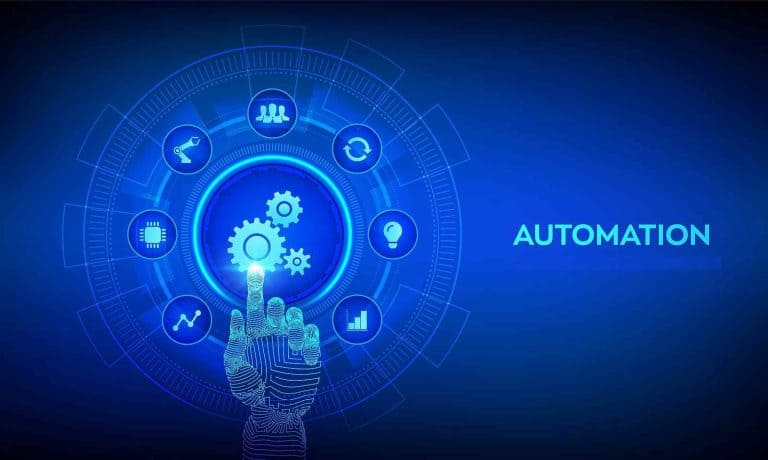The term “automation” in IT tends to send a shudder of anxiety through support agents. There is a common misconception that automation will replace humans, but that is simply not the case – in fact, automation may actually pave the way for more meaningful human interactions and more streamlined processes enterprise-wide. Whether an agent works in the IT department’s support desk or provides support to external customers, automation can elevate their experience for many reasons, and in many ways.
Common Types of Automation Introduced to Support Agents
Before we dive into the benefits and uses of automation, as well as the reasons automation is not to be feared, it is important to understand the term automation itself. This term is often a catch-all for any action completed by a machine, but in this context, we are referring specifically to the automation that streamlines job functions and processes.
This type of automation can refer to ITSM automation, such as ticket creation, tracking, and analytics (which can be used outside of the IT department for enterprise-wide impacts). ITSM automation is achieved with an ITSM software that specifically uses structures and stored knowledge, and AI technologies such as chatbots or virtual agents using automated workflows, a knowledge database, and an ITSM software to provide the infrastructure, the main goal of ITSM automation is to boost efficiencies across multiple teams and departments.
Agents can access this automation through a self-service portal or self-help program, which can be implemented for both internal and external customers.
Benefits of IT Automation
The benefits of automation for those in support roles cannot be understated. These benefits are not all completely focused on optimizing costs for the business. In fact, automation can improve the employee experience and create a more positive environment. Further benefits of automation include:
- A reduction in overall number of calls which require a live agent, ultimately improving productivity and saving overall cost per call.
- Lower average interaction handle time.
- Shorter on-boarding time as agents can find answers on their own, more quickly and easily without extensive training when given access to automated self-help.
- An increase in employee satisfaction as less time is spent on simpler tasks while simultaneously empowering the agent with the necessary knowledge to problem-solve.
Ultimately, it improves operations by freeing up agents to handle more complex tickets, creates more efficient release management and change management processes, and improves productivity – all boiling down to a better ROI on technology in the workplace.
3 Reasons Automation Is NOT the Death of the Support Agent and Use Cases to Prove It
Automation is not going to steal agent jobs. Of course, saying that is one thing, but showing it is another, which is why I have compiled three reasons automation won’t kill jobs, and use cases to support this claim.
It should be noted that automation must be built on the most valuable asset in the company—knowledge. This knowledge can be living in documents, subject to change as processes change, however having a knowledge database and strategy is the key to getting automation right for all of the following reasons and uses.
- Automation Should Augment and Enhance Agent Support (NOT Eliminate It!)
When used properly, automation should act as a tool to empower, enhance, and augment support agents. This is an important distinction because many times, the idea of automating tasks makes it seem that the employee is being removed from the process completely, but this is not so.
For example, one use case for automation which enhances the agent experience is in employee onboarding. Using a workflow automation tool with self-service capabilities, you can automate onboarding processes which will reduce paperwork errors and eliminate oversights. It can also help you provide consistent information to all new hires, such as company information, internal procedures, organizational charts, or tax forms.
Talk to newly hired employees to find out what questions or requests they had during the onboarding process or analyze what common questions or requests were brought to the service desk during an onboarding process by analyzing past tickets that were submitted. Once you have that, talk to HR to identify the right processes for those questions or requests so you can move forward to automating these processes. To take this a step further, implementing a self-help software which is tied into the automated workflow system will enable new employees to find answers even after they have been onboarded and have begun working in their new roles.
Additionally, it can help you gather accurate data from new hires to continue improving onboarding processes.
- Automation Empowers Collaboration
One of the main reasons that automation shouldn’t replace people is because it empowers meaningful interactions and collaboration. For example, automated workflows integrated in an ITSM platform will route tickets to the proper party and will then update team members who are collaborating on the task or project so that everyone can remain organized. If tickets must be escalated, automation makes it simple to push that to the next step, sharing the progress made without having lengthy meetings or status reports to create.
Another way automation empowers collaboration is by ensuring that everyone is being provided the same information at the same time via self-service. If you are working on a project with an outside team, for example, it is important that you all can access each other’s shared knowledge. Automation makes it possible to do that with minimal effort.
- Automation Improves Human Experiences for Higher Customer Satisfaction
When it comes to serving customers, be they internal customers of a service desk or external customers looking for support, seamless interactions are key. The way to streamline these interactions is through automation.
An example of this the use of automation to push out faster updates to customers. Rather than requiring customers to accept and download updates, these automatic updates are pushed to customers which minimizes issues and reduces calls for support on the update download process.
Another example of automation that leads to higher customer satisfaction and improved human experience is that which creates uniform processes and eliminates the repetitive tasks that waste employees’ time. This might look like automated workflows that guide the support agent to the correct answers, making it easier for both the agent and the customer and affords the time and opportunity to connect on a human level.
People-First in a Tech-Driven World
The main thing to take away is that even with the empowerment of automation, it is still crucial to put people first in the tech-driven world. If each initiative is not people-focused, adoption of this technology will ultimately fall flat. The technology should empower the user while working to actively solve problems that might otherwise be too time-consuming.
To learn more about how to use people-driven automation enterprise-wide, download the eBook, 3 Ways to Take Service Management Beyond IT!




